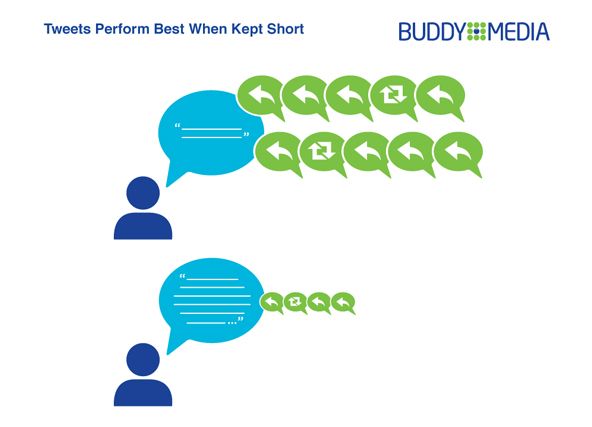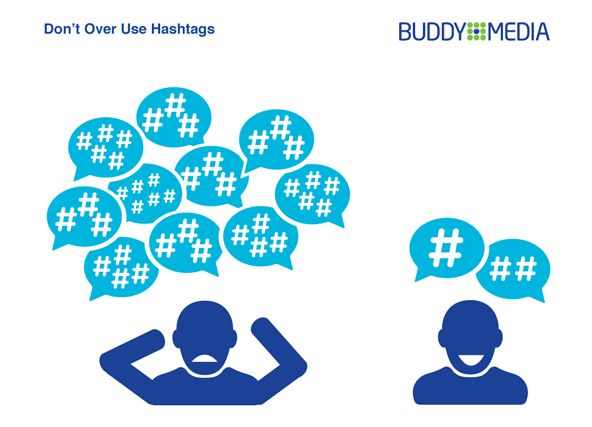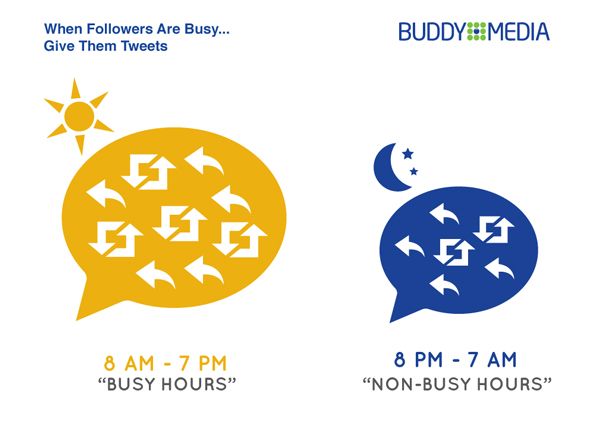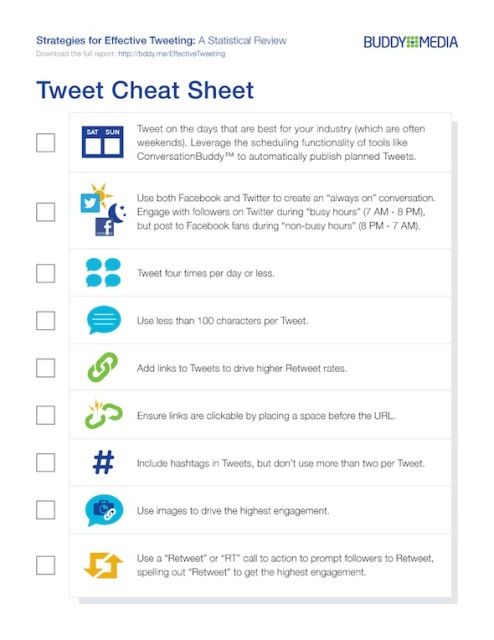Marketers still using Twitter wrongly! New report shows how to maximise Twitter potential
Tweeting too much, on the wrong days, with too many or not enough hashtags can cause damage to a marketing campaign according to a new study by Buddy Media. Looking at 320 Twitter handles from the world’s biggest brands from December 11 2011 to February 23 2012 the report showed some impressive findings and how brands can maximise their Twitter potential.
User reach and engagement can vary drastically with just a few minor tweaks. Primary success metrics included in the report were; reply rate – number of replies as a percentage of followers, retweet rate – number of retweets as a percentage of followers (includes manual retweets), and, engagement rate – a combination of the replies and retweets in the number of followers.
Tami Dalley, VP of Analytics and Insights at Buddy Media, commented, “Twitter is an integral part of every brand’s social marketing strategy, so we took a deep dive to see how they can increase engagement within their communities.”
The study showed tweets should be kept to less than 100 characters for maximum impact; tweets of less than 100 received a 17% higher engagement rate. Tweets which included links also received an 86% higher retweet rate than those without and, a fairly obvious point, the links should work. Surprisingly the report showed a massive 92% of links did not and this was mostly down to users missing the space before the link.
Hashtag’s are also pivotal to user engagement but only 24% of tweets published during the study had them. In general tweets with hashtag’s will get twice the engagement of those without. Though, overuse of hashtag’s can be just as damaging as using none at all. Tweets with one or two hashtags receive 21% higher engagement than those with three or more, using more than two hashtags actually leads to a 17% drop in engagement.
Asking followers to ‘RT’ a message sees a twelve times higher retweet rate than those who do not ask but taking the time to spell out the word ‘retweet’ sees that figure rise to 23 times more. Tweets with images also have double the engagement rate of tweets without, even though users don’t see the image until they click on it.
Another key finding was engagement rates for brands was 17% higher at the weekends as opposed to weekdays, but brands failed to utilise this with, on average, only 19% of the brands tweeting at the weekends.
According to Buddy Media, brands tweet too much in the middle of the week and not nearly enough on the weekend. This is especially true of publishing which sees 29% higher engagement over the weekend yet only 7% of tweets from publishers occur on Saturdays.
In contrast, the study also showed that, unsurprisingly, tweets published in ‘busy hours’ performed best. Twitter’s busy hours are defined as 8am to 7pm when tweets see at 30% higher engagement rate compared to those published ‘after-hours’. Oddly this is in reverse to the other big social network, Facebook, which sees a 17% higher engagement rate after-hours – the advice from Buddy Media, brands should use both but at different times.
Dalley continued, “It’s more important than ever to make sure your brand is taking advantage of best practices on Twitter. This report helps make that happen.”
With over 140 million active users and in excess of 340 million tweets per day Twitter is the social network brands simply cannot afford to ignore. Very few brands are not on Twitter in some capacity these days, Buddy Media’s recent report with global research firm Booz and Co. showed that 77% of brands consider Twitter a priority social media platform and have since created a ‘cheat sheet’ - shown below - for brands to ensure they are leveraging all successful methods for effective tweeting.
Content created with:

Buddy Media
Find out more




